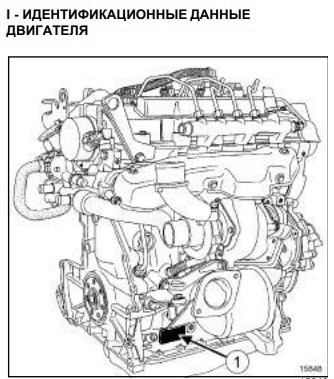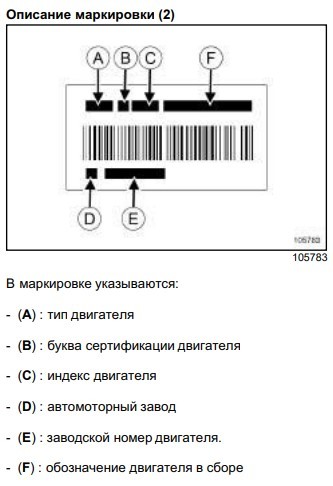
Renault G9U engine
Content
French engineers have developed and put into production another power unit, which is still used on second-generation minibuses. The design turned out to be in demand and immediately won the sympathy of motorists.
Description
In 1999, new (at that time) automobile engines of the “G” family began to roll off the assembly line of the Renault auto concern. Their release continued until 2014. The G9U diesel engine became the base model. It is a 2,5-liter in-line four-cylinder turbodiesel with a capacity of 100 to 145 hp at a torque of 260-310 Nm.

The engine was installed on Renault cars:
- Master II (1999-2010);
- Traffic II (2001-2014).
On Opel/Vauxhall cars:
- Movano A (2003-2010);
- Vivaro A (2003-2011).
For Nissan vehicles:
- Interstar X70 (2003-2010);
- Primastar X83 (2003-2014).
Technical specifications
| Manufacturer | Renault Group |
| Engine volume, cm³ | 2463 |
| Power, HP | 100-145 |
| Torque, Nm | 260-310 |
| Compression ratio | 17,1-17,75 |
| Cylinder block | cast iron |
| Cylinder head | aluminum |
| Cylinder diameter, mm | 89 |
| The piston stroke, mm | 99 |
| The order of the cylinders | 1-3-4-2 |
| Number of valves per cylinder | 4 (DOHC) |
| Timing drive | belt |
| balance shafts | no |
| Hydraulic compensators | Yes |
| EGR valve | Yes |
| Turbocharging | turbine Garrett GT1752V |
| Camshaft adjuster | no |
| Fuel system | Common Rail |
| Fuel | DT (diesel) |
| Environmental standards | 3 euros |
| Service life, thousand km | 300 |
What do modifications 630, 650, 720, 724, 730, 750, 754 mean
For all the time of production, the engine has been repeatedly improved. The main changes to the base model have affected the power, torque and compression ratio. The mechanical part remains the same.
| Engine code | Power | Torque | Compression ratio | Year of construction | Installed |
|---|---|---|---|---|---|
| G9U 630 | 146 hp at 3500 rpm | 320 Nm | 18 | 2006-2014 | Renault Traffic II |
| G9U 650 | 120 l. s at 3500 rpm | 300 Nm | 18,1 | 2003-2010 | Renault Master II |
| G9U 720 | 115 liters with | 290 Nm | 21 | 2001 | Renault Master JD, FD |
| G9U 724 | 115 l. s at 3500 rpm | 300 Nm | 17,7 | 2003-2010 | Master II, Opel Movano |
| G9U 730 | 135 hp at 3500 rpm | 310 Nm | 2001-2006 | Renault Traffic II, Opel Vivaro | |
| G9U 750 | 114 HP | 290 Nm | 17,8 | 1999-2003 | Renault Master II (FD) |
| G9U 754 | 115 hp at 3500 rpm | 300 Nm | 17,7 | 2003-2010 | RenaultMasterJD, FD |
Reliability, weaknesses, maintainability
The technical characteristics of the engine will be most complete if the main operational factors are attached to it.
Reliability
Speaking about the reliability of the internal combustion engine, it is necessary to recall its relevance. It is clear that a low-quality, unreliable motor will not be popular among car owners. G9U is devoid of these shortcomings.
One of the main indicators of reliability is the service life of the engine. In practice, with timely maintenance, it exceeds 500 thousand km of maintenance-free mileage. This figure confirms not only the durability, but also the reliability of the power unit. It must be borne in mind that not every engine corresponds to what has been said. And that's why.
The high reliability of the power unit is ensured not only by innovative design solutions, but also by stringent maintenance requirements. Exceeding the deadlines both in terms of mileage and in terms of the time of the next maintenance significantly reduces the reliability of the internal combustion engine. In addition, the manufacturer imposes increased requirements on the quality of the consumables used and the fuels and lubricants used.
Not unimportant in our operating conditions are the recommendations of experienced drivers and car service specialists. Especially about resource reduction between services. For example, they recommend changing the oil not after 15 thousand kilometers (as stated in the service regulations), but earlier, after 8-10 thousand kilometers. It is clear that with such an approach to maintenance, the budget will be somewhat reduced, but reliability and durability will increase significantly.
Conclusion: the engine is reliable with its timely and proper maintenance.
Weak spots
Regarding the weak points, the opinions of car owners converge. They believe that in the engine the most dangerous are:
- broken timing belt;
- a malfunction in the turbocharger associated with the flow of oil into the intake;
- clogged EGR valve;
- malfunctions in electrical equipment.
Car service specialists add frequent cylinder head destruction after repairing them on their own. In most cases, this is a thread break under the bed of the camshafts. The fuel equipment was not left without attention. It also quite often fails due to contamination with low-quality diesel fuel.
Let's figure out why this happens and what needs to be done to eliminate these troubles.
The manufacturer determined the resource of the timing belt at 120 thousand kilometers of the car. Exceeding this value leads to a break. The practice of operating a car in our conditions, which are far from European, shows that all recommended replacement periods for consumables need to be reduced. This also applies to the belt. Therefore, its replacement after 90-100 thousand km will significantly increase the reliability of the engine and prevent the inevitability of a significant and costly repair of the cylinder head (rockers bend in the event of a break).
The turbocharger is a complex, but quite reliable mechanism. Timely maintenance of the engine and replacement of consumables (oil, oil and air filters) facilitate the operation of the turbine, which prolongs its service life.
Clogging of the EGR valve significantly reduces the power of the internal combustion engine, impairs its start. The fault is the low quality of our diesel fuel. In this matter, the motorist is practically powerless to change anything. But there is a solution to this problem. First. It is necessary to flush the valve as it becomes clogged. Second. Refuel the vehicle only at approved gas stations. Third. Shut off the valve. Such an intervention will not bring harm to the engine, but the environmental standard for exhaust gas emissions will decrease.
Faults in electrical equipment are eliminated by specialized car service specialists. The engine is a high-tech product, so all attempts to troubleshoot on your own lead, as a rule, to failure.
Maintainability
Maintainability issues are not a problem. Cast iron block allows you to bore cylinders to any repair size. In addition, there is data on the insertion of cartridge cases into the block (specifically, 88x93x93x183,5 with a collar). Boring is made under the repair size of the piston, and during the sleeve, only the piston rings change.
The selection of spare parts is also not difficult. They are available in any assortment in specialized or online stores. When choosing replacement parts, preference must be given to original ones. In rare cases, you can use analogues. Used spare parts (from dismantling) should not be used for repairs, as their quality is always in doubt.
Restoration of the motor must be done at a specialized car service. In "garage" conditions, this should not be done because of the difficulty of observing the repair process. For example, a deviation from the manufacturer's recommended tightening torque for fastening the camshaft beds causes the destruction of the cylinder head. There are many similar nuances on the engine.
Therefore, the repair of the engine should be carried out by experienced specialists.
Engine identification
Sometimes it becomes necessary to determine the make and number of the motor. This data is especially needed when purchasing a contract engine.
There are unscrupulous sellers who sell 2,5 liters instead of 2,2 liters DCI. Outwardly, they are very similar, and the difference in price is about $1000. Only an experienced specialist can visually distinguish engine models. The deception is carried out simply - the nameplate at the bottom of the cylinder block changes.
At the top of the block is the engine number, which cannot be faked. It is made with embossed symbols (as in the photo). It can be used to determine the volume of the motor by checking with the data of the manufacturer, which are in the public domain.

The location of the identification plates may vary depending on the modification of the internal combustion engine.
The Renault G9U turbodiesel is a durable, reliable and economical unit with timely and high-quality maintenance.





